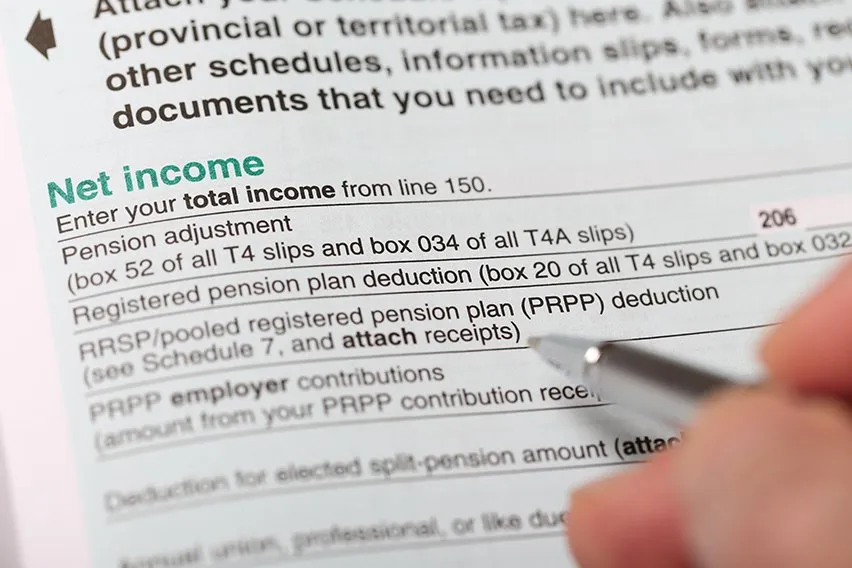What Is Retroactive Pay?

One of the biggest responsibilities that a business owner has is ensuring that their team has been compensated fairly.
It’s important not just for your financial department, but also for the morale of your employees. As a business owner, you should take steps to ensure that they are properly compensated for their time and effort.
Paying your employees accurately and on time is vital. But unfortunately human error does occur and mistakes happen.
This is where retroactive pay comes into play. Retroactive pay allows you to rectify any payroll errors and therefore right any financial wrongs.
But what exactly is retroactive pay? We’ll take a closer look at the definition, how it works and more.
Here’s What We’ll Cover:
What Are Examples of Retroactive Pay?
What’s the Difference Between Retro Pay and Back Pay?
Retroactive Pay & Court Rulings
How Do You Calculate Retroactive Pay?
How Do You Tax Retroactive Pay?
How Do You Issue Retroactive Pay?
What Is Retroactive Pay?
Retroactive pay, or retro pay as it is sometimes known, is when a business issues its employees money to correct a previous underpayment.
Any business that has a cohesive accounting department will not encounter the need for retroactive pay often. But when it does happen it tends to be due to a negotiated contract, or when an accounting mistake has been made.
Retroactive payment can also be a court-ordered action if there has been a payment dispute between an employee and their employer.
So essentially, retroactive pay is the method of paying employees back. This is when they are not properly compensated the first time around.

What Are Examples of Retroactive Pay?
As we mentioned earlier, the need for retroactive pay isn’t something that comes around often. But when it does, it tends to be for a number of reasons. Here are some examples of when retroactive pay might be needed:
- OvertimeRetro pay can come into play if the payroll department forgets to multiply an employee’s overtime hours by the given overtime rate.
- Shift Changes If an employee picks up extra shifts outside of their normally scheduled shifts then employers can forget to increase their rate.
- CommissionIf a client pays late, then this may delay the availability of funds necessary to pay employees commission.
- Pay RiseA payroll department may fail to adjust an employee’s wages after giving them a raise.
What’s the Difference Between Retro Pay and Back Pay?
You might hear the terms retroactive pay and back pay used interchangeably. Both are payments that are issued after the original payment period. But they have some key differences that should be taken into consideration by both employers and employees.
Retroactive Pay
Retroactive pay is the remaining balance an employer owes to a worker. This is in comparison to what was originally paid during the initial pay period.
Back Pay
Back pay is a payment that is made to catch up on compensation that was never issued for the work that was carried out by an employee.
This could include correcting missed bonuses, missed regular hours of work, or missed overtime hours of work.
Most of the time back pay is brought on by a lawsuit in which an employer failed to pay what was due. A judge would generally issue a particular order on back pay, fines and restitution.
So to put it into a simple example; if you gave your employee a raise but forgot to change their wages, then you would owe them retroactive pay.
But if you forgot to pay an employee for an entire day of work, you would owe them back pay.
Retroactive Pay & Court Rulings
There are situations and scenarios where an employee may want to take their employer to court in pursuit of retroactive pay. Here are some examples of when it may be necessary to take the dispute to court:
- Breach of ContractIf an employer fails to pay an employee or contractor the negotiated fee according to their legal agreement. They would then be in breach of the contract. This would then become a legal issue.
- Minimum Wage ViolationsIf an employer pays their employees less than the legally required minimum wage as set out by the Government. They would then be operating illegally.
- DiscriminationThis would come into play if a group of employees receives preferential or non-preferential compensation based on any protected status. This could include their race, gender, disability, sexuality or age.
- RetaliationThis is when an employer wrongfully terminates an employee for unlawful reasons. For example, this may be due to whistleblowing or them being the victim of harassment.
- Overtime ViolationsWhen an employer fails to properly compensate their employees by not factoring in overtime rates.
How Do You Calculate Retroactive Pay?
If you have discovered a payroll error or an employee has alerted you to one, then you’ll most likely want to resolve it as soon as possible.
However, the method that you could go about rectifying this error would change based on how you compensate your employees. This is because retroactive pay is different for salaried employees and hourly employees.
How to Calculate Retroactive Pay for Hourly Employees
The method for calculating retro pay for hourly employees is a relatively straightforward endeavour.
You’ll first need to figure out what you mistakenly paid the employee for the hours that they worked. For example if an employee worked 30 hours but you only paid them for 25, then you will owe them 5 hours worth of their regular pay.
Once you’ve determined the difference in hours paid and hours owed, you’ll need to find out what the hourly rate you’ve agreed to pay the employee. Let’s say you’ve agreed on £20 per hour.
You would then do the following calculation:
5 (hours) x 20 (hourly rate in £) = £100
So you would then owe them £100 in retroactive pay.
In most cases, you would pay an employee retroactive pay by adding it onto the employee’s next paycheck.
How to Calculate Retroactive Pay for Salaried Employees
An employee that is paid a monthly wage is usually issued the same amount on each paycheck that they earn. This would make figuring out their retroactive pay relatively simple as well.
If your employee is supposed to be paid £2,000 per month, but they only received £1,750, then you would owe them £250 in retroactive pay.
But keep in mind that retroactive pay comes with a variety of circumstances. For example, when wage increases are forgotten by a payroll department.
So let’s say that an employee makes £50,000 per year and they recently received a raise to £55,000 per year. The employee then discovers in their most recent paycheck that they are still being paid their old rate of pay.
You’ll then need to determine how much they should be paid on each paycheck with their new rate, then subtract the old rate to find the difference. Once this has been figured out you can issue the retroactive pay on their next paycheck.

How Do You Tax Retroactive Pay?
Retroactive pay is taxed exactly the same as regular pay. So it is still subject to income tax, national insurance and any other applicable form of tax.
How Do You Issue Retroactive Pay?
Once you have realised that there has been an error, then calculated the amount that your employee is entitled to, there are three separate ways that you can issue this payment:
- Create a Separate Payroll Run: This can be a one-time payment of the amount owed. This should be titled RETRO to reduce the chance of there being any confusion.
- Include the Payment in the Next Paycheck: You can simply add the extra payment onto your employees next paycheck. Again this should be labelled RETRO so that it is clear that it is a retroactive payment.
- Increase Pay on the Next Paycheck: Similar to the above step. But instead of it being a separate payment, you can just add it as a lump sum onto your employee’s regular pay. So instead of them being paid £500, they’re paid £600 let’s say.
Key Takeaways
Retroactive pay is an important part of running a business and keeping your employees happy.
Mistakes do happen, and most employees will accept that. But this is with the caveat that once an issue is discovered, it is swiftly resolved and steps are taken to ensure this mistake doesn’t happen again.
Using accounting software such as FreshBooks is one way to automate payments. This means that you can take steps to eliminate human error from your accounting and payroll processes.
Are you looking for more business advice on everything from starting a new business to new business practices?
Then check out the FreshBooks Resource Hub.
RELATED ARTICLES

 What is the Cost Principle? Definition & Meaning
What is the Cost Principle? Definition & Meaning How to Calculate Net Income: Examples & Formula
How to Calculate Net Income: Examples & Formula What Are Pricing Strategies & 8 Common Strategies for Business
What Are Pricing Strategies & 8 Common Strategies for Business Payment Processor: Overview and Top 5 Picks for 2025
Payment Processor: Overview and Top 5 Picks for 2025 Credit Vs Debit Card: What’s the Difference?
Credit Vs Debit Card: What’s the Difference?